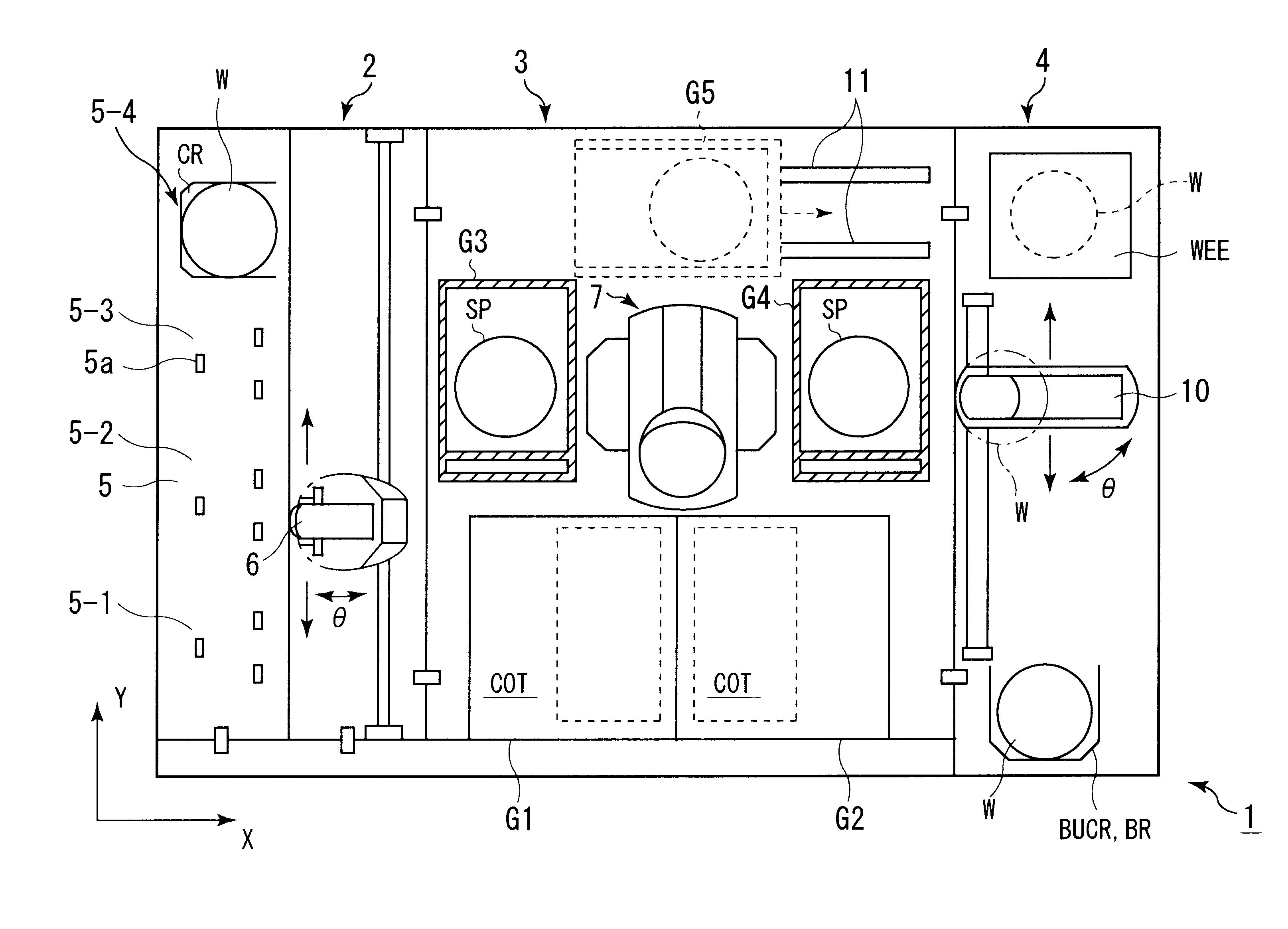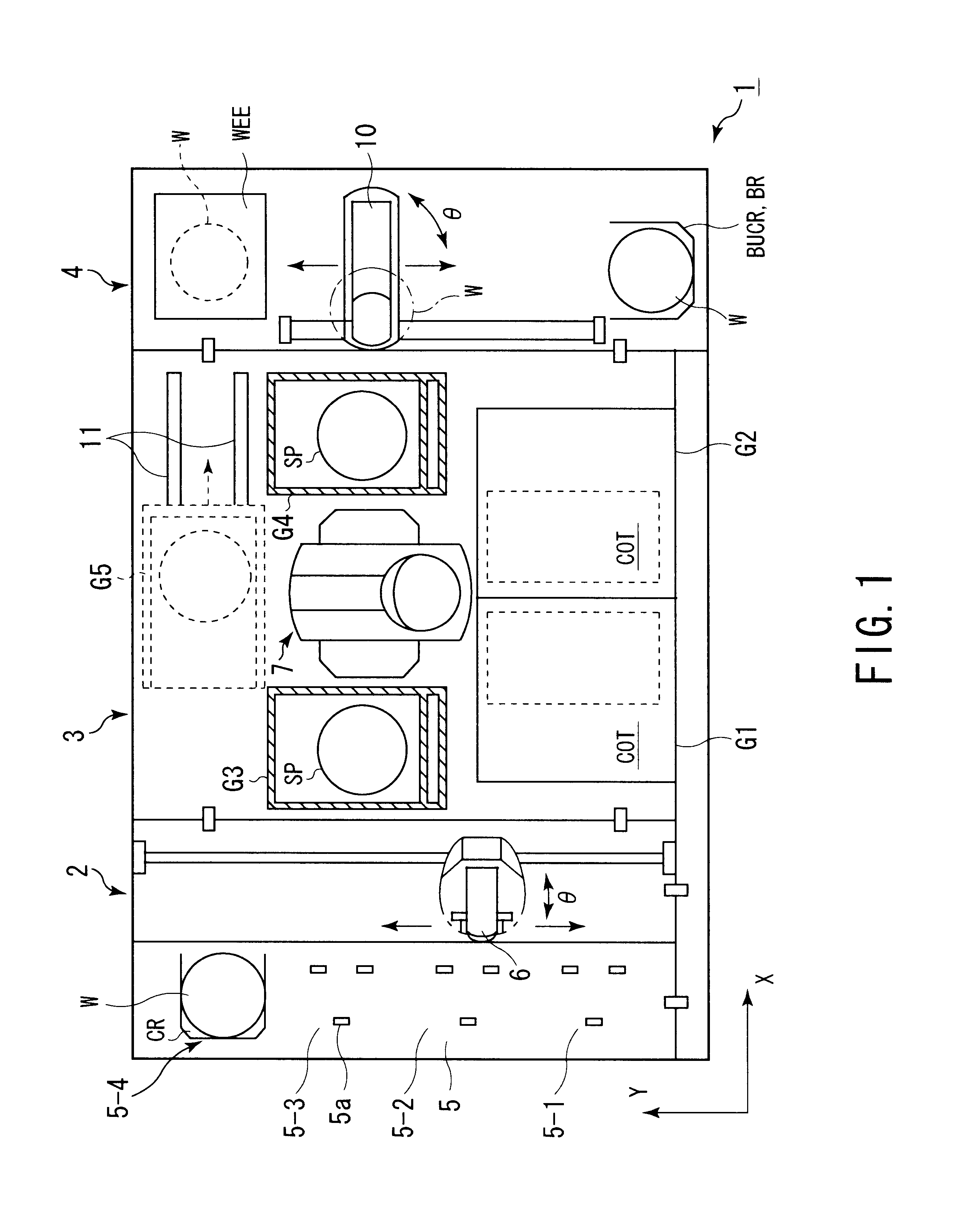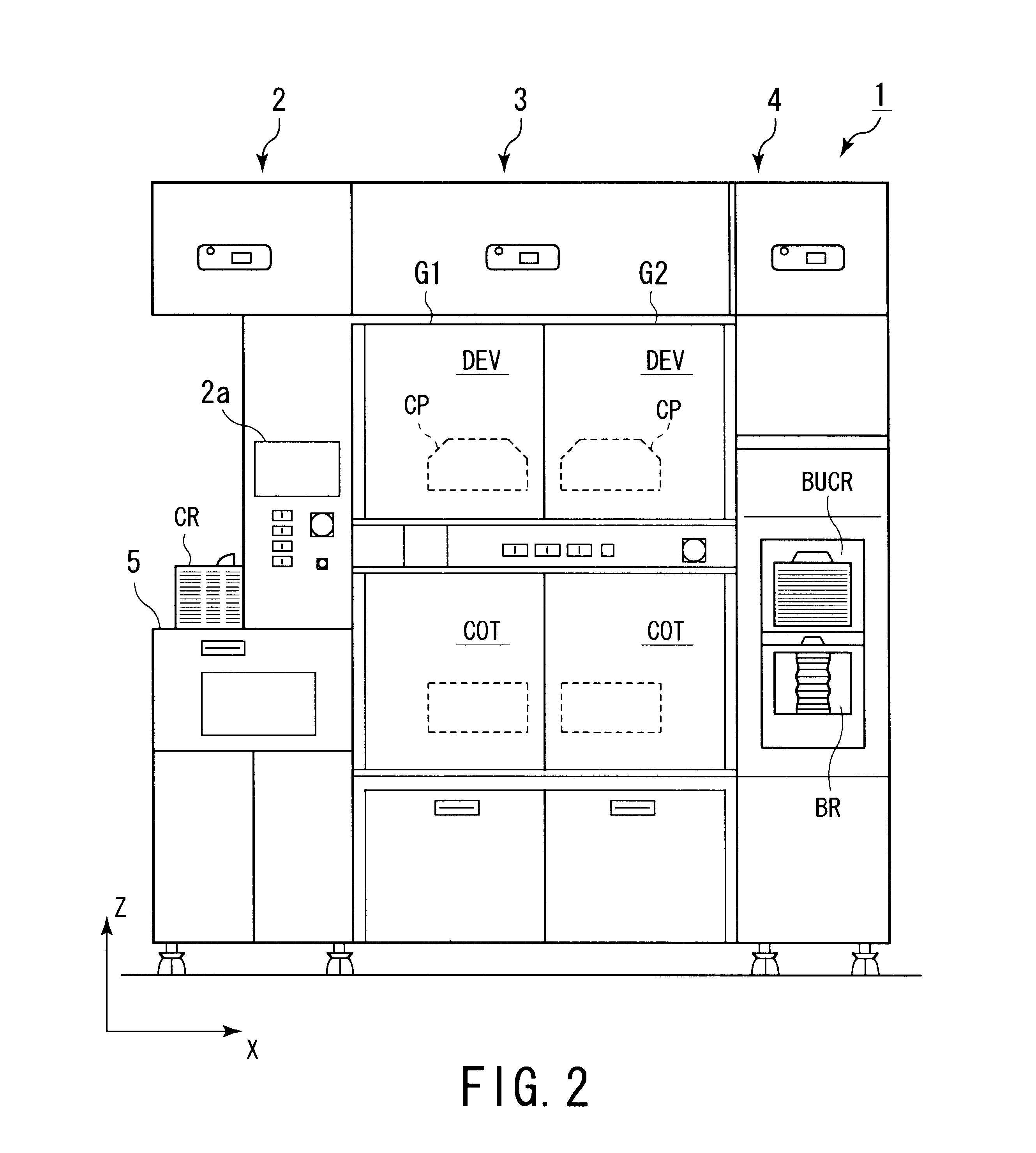Substrate processing system and substrate processing method
a substrate processing and processing system technology, applied in the direction of total factory control, programme control, electric programme control, etc., can solve the problems of low system throughput, long time-consuming and laborious, and long time-consuming to raise the temperature of the heat processing uni
- Summary
- Abstract
- Description
- Claims
- Application Information
AI Technical Summary
Benefits of technology
Problems solved by technology
Method used
Image
Examples
first embodiment
(First Embodiment)
FIGS. 1 to 3 are schematic diagrams showing the overall structure of a substrate processing system 1 according to a first embodiment of the present invention. The substrate processing system 1 comprises a loading / unloading portion 2, a processing portion 3, and an interface portion 4. The loading / unloading portion 2 successively extracts wafers W from a cassette CR. The processing portion 3 performs a resist solution coating process and a developing process for a wafer W extracted from the cassette CR by the loading / unloading portion 2. The interface portion 4 transfers the wafer W that has been coated with a resist solution to an exposing device 12. The interface portion 4 has a second sub-arm mechanism 10. The second sub-arm mechanism 10 exchanges the wafer W with the exposing device 12. The loading / unloading portion 2 has a holding table 5 on which a semiconductor wafer W is extracted and returned from / to a cassette CR.
As shown in FIG. 1, in the loading / unloadin...
second embodiment
(Second Embodiment)
Next, a modification of the first embodiment will be described as a second embodiment of the present invention. According to the second embodiment, when the operator could not change a cassette CR in a time period for which the cassette CR can be changed, the successive lot processes are suspended. According to the second embodiment, in such a case, the heat process start time for each heat processing unit is compensated.
As was described in the first embodiment, the heat process start time has been obtained when the successive lot processes are performed (namely, when real processes for the first lot are performed). However, when the operator could not mistakenly change a cassette CR in the time period for which the cassette CR can be changed, the heat process start time deviates from the real process start time for the first lot. In other words, since a cassette CR has not been changed, the continuous processes for the next lot are not started. However, a heat pr...
PUM
 Login to View More
Login to View More Abstract
Description
Claims
Application Information
 Login to View More
Login to View More - R&D
- Intellectual Property
- Life Sciences
- Materials
- Tech Scout
- Unparalleled Data Quality
- Higher Quality Content
- 60% Fewer Hallucinations
Browse by: Latest US Patents, China's latest patents, Technical Efficacy Thesaurus, Application Domain, Technology Topic, Popular Technical Reports.
© 2025 PatSnap. All rights reserved.Legal|Privacy policy|Modern Slavery Act Transparency Statement|Sitemap|About US| Contact US: help@patsnap.com



